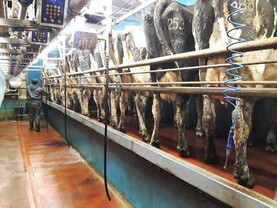Issues are continuously raised by farmers in relation to delays in getting TAMS approval and a large delay in payments issuing. We sat down with Oliver Molloy from the TAMS section of the Department of Agriculture to examine the key areas causing issues.
Issues with applications
“One of the issues that we are finding is that the people that are drawing up the sheds are not familiar with the specifications,” Oliver said.
“Then, when planning permission is granted and they make their TAMS application, they are being rejected as their stanchions are not in the right places or the ventilation is incorrect.
“The people putting in the applications are being blamed but the damage has been done, so to speak, when the shed was drawn up. Not only do they have to make a new TAMS application, but they have to apply for planning permission all over again.”
Having detailed drawings that are fully up to the specification at the beginning of the process can cut out a lot of the pain as the application progresses.
“One of the highest rates of rejection are for young farmers, because they have been farming more than five years, so they really need to be conscious of when they got their herd number,” according to Oliver.
“The second issue is where farmers are applying with outline planning permission and not full planning permission and, unfortunately, we are rejecting those. We are not going to make a commitment in relation to funding until we know that a building has planning permission.
“Another issue is the quality of the drawings that come in and some of them can be very bad. To be honest, if it is going to come in poor quality, the simplest thing for us to do is to reject it and get them to send it in correctly and it all takes time.”
Issues with payment
Farmers are also expressing a lot of frustration when it comes to the time taken for payment to issue. “The average payment claim would be targeted between a month and six weeks,” said Oliver.
“One of the problems that we are getting is that farmers are forgetting who the applicants are. It sounds simple, but it’s not. Farmers in a company need to remember that the applicant is the company and that all documents that are coming in are for the company. We are still getting in receipts with the name of the farmer. They are two different legal entities.
“Another issue is where addresses of applicants are not detailed enough on receipts and may only have their name and county,” Oliver said.
“The costs of the main investments must be shown individually. They can be on the one receipt, but must be shown individually. Some applications could have 120 to 130 supporting documents with them. If there is an issue where a receipt is incorrect, we can reject it online, with a query sent back to the applicant and they can upload the correct document or receipt.
“Another big issue is in relation to trade-ins and they are causing a lot of trouble. A trade-in must be included on the receipt.
“Say someone is buying a bulk tank for €30,000 and you have a trade in of €5,000 for the old bulk tank. There is no mention on the receipt at all of the trade in. We then go and do an inspection and ask for a copy of the bank account and we see that €25,000 before VAT left their bank account. That is non compliance and there will be a penalty.
“If we look at it simply, if I build a shed for €120,000 and give you €120,000 worth of receipts, wouldn’t you like to know that all of the receipts relate to the investment, that they came from me and didn’t come from another building,” said Oliver.






 This is a subscriber-only article
This is a subscriber-only article









SHARING OPTIONS: